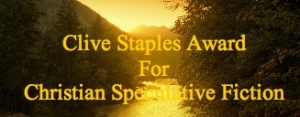 Some writing instructors insist on a particular story structure: there must be three acts and between each, a door of no return. Screenwriters use this formulaic structure, and many novelists have adapted it. But is this “beginning, middle, and end” framework a must?
Some writing instructors insist on a particular story structure: there must be three acts and between each, a door of no return. Screenwriters use this formulaic structure, and many novelists have adapted it. But is this “beginning, middle, and end” framework a must?
To be honest, when I started writing novels, I’d never heard of the three-act structure. Later, when I read about the concept, “beginning, middle, end” seemed like a horrific oversimplification of the story form. More than that, I bristled at the idea that I was to write according to a set formula.
Soon, however, I began to see the structure in movies, and honestly, some of the joy of stories blinked out. Now I could predict, when things were bad, they’d only get worse. I could anticipate the beaten bad guy pulling out a gun, or the frightened girl running into the arms of the killer. The more I saw the girders of the story structure, the less I liked it.
Did all stories really have three acts?
Anyone familiar with drama knows they do not. There are one-act plays, two-act plays, even four- or five-act plays. Yet there are writers, and writing instructors, who hold religiously to the three-act structure.
Act One introduces the hero and gives a call to adventure which he may resist, but eventually he passes through the first door of no return and accepts, ushering him into Act Two. Here a mentor appears who teaches the hero and he has any number of encounters with the dark forces. At some point he faces a dark moment within himself, then discovers a talisman that helps him in the battle. Again he passes through a doorway of no return which thrusts him into Act Three and the final battle, after which he returns to normal, though he himself is changed, for good or ill.
Of course there are adaptations of this framework for the various genres, but a good many writers believe this is the only way a story can be structured. Thankfully, not every writing instructor sees it this way. Earlier this year Stephen James said in his Writer’s Digest article “The 5 Essential Story Ingredients”
While it’s true that structuring techniques can be helpful tools, unfortunately, formulaic approaches frequently send stories spiraling off in the wrong direction or, just as bad, handcuff the narrative flow. Often the people who advocate funneling your story into a predetermined three-act structure will note that stories have the potential to sag or stall out during the long second act. And whenever I hear that, I think, Then why not shorten it? Or chop it up and include more acts? Why let the story suffer just so you can follow a formula?
Screenwriter John Truby also brings into question following a formula. In his book The Anatomy of Story, he says, “A great story is organic — not a machine but a living body that develops” (p. 5). He further explains, “The story must feel organic to the audience; it must seem like a single thing that grows and builds to a climax. If you want to become a great storyteller, you have to master this technique to such a high degree that your characters seem to be acting on their own, as they must, even though you are the one making them act that way.”
Some writers talk about their characters insisting on going here or doing that. The characters, of course, aren’t real and can only do what the author imagines them to do. But if the character comes to life for the author, then there is a “right” way she must act that is consistent with her traits. The story, then, organically grows out of the characters rather than the author imposing a set of actions on the character.
And how many acts can that take? As many as need be. Stephen James again:
Stop thinking of a story as something that happens in three acts, or two acts, or four or seven, or as something that is driven by predetermined elements of plot. Rather, think of your story as an organic whole that reveals a transformation in the life of your character. The number of acts or events should be determined by the movement of the story, not the other way around.
Because story trumps structure.
Now that’s the kind of story structure I like.


![PowerElementsCharacterDevelopment[1000][1]](https://rebeccaluellamiller.files.wordpress.com/2015/05/powerelementscharacterdevelopment10001.jpg?w=205)





